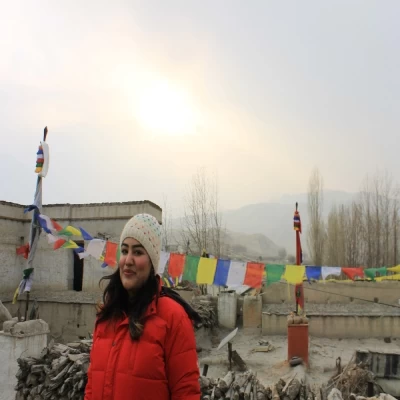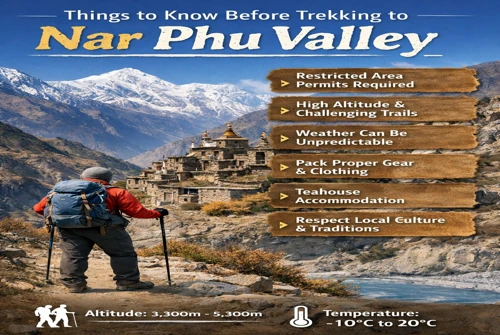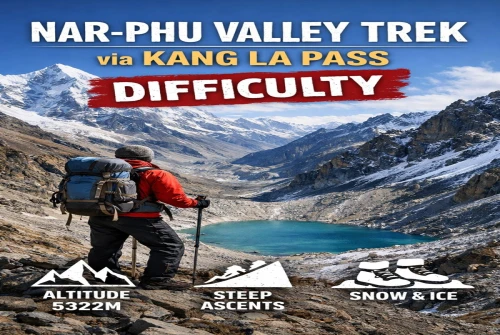Everest region is renowned for some of the highest treks in the world. But Everest region treks are more than just climbing and trekking, it is a life-changing experience. On a route dubbed by some as "the steps to heaven," every turn in the trail provides mesmerizing views and photo opportunities. Beautiful forests, Sherpa villages, glacial moraines, and foothills; this is a unique blend of outdoor adventure and cultural exploration. For active adventurers willing to take the challenge, Everest region treks are the best opportunity to bring you close to the local cultures before opening a window to the world's top.
Everest is the attraction, but once you start trekking you'll realize that there's much more to the Everest region than its iconic peak. There are three different valleys to complete the trek, each with stunning mountain views, giant snowy peaks, and beautiful villages. Even if Everest wasn't here, the region would still boast some of the best trekking routes in the world.
All the treks here start from Lukla (or below) and head north to the village of Namche Bazaar From there, you can do the normal Everest Base Camp or one of the other two valleys. Similar to every other trek, the duration and route can vary depending on what you're looking for, how fast you can walk, and the kind of experience you wish to have.
Everest Region Treks
Everest Base Camp trek (5600m)
The Everest Base Camp trek is the most popular Everest region trek. It is a full adventure, a spectacular high-altitude trek in the Mt. Everest region in Nepal. This classic Everest trek through the Khumbu Valley offers more than just a walking trip, it is for many an experience of a lifetime to the highest mountain in the world, in a remarkable country that will leave you with vivid memories of people who live here.
The trip starts with a scenic flight to Lukla from the capital Kathmandu as every other Everest region trek. The actual trek starts from Lukla. The jovial trekking trail passes through the ethnic villages of the region, and coruscating around landscapes that are extremely beautiful and refreshing, offer a trekking journey that truly captures the essence of the Nepalese mountain life. The mountain views are seen along the way, and the rich natural terrain and its prospect of Sherpa tradition are what make the Everest Base Camp Trek journey a daring feat of adventure in the alpine landscape of Khumbu. The trekker is ewarded with a 360-degree panoramic view of mountains such as Mt. Everest (8848 m), Mt. Nuptse (7861 m) Mt. Lhotse (8516 m), Mt. Thamserku (6623 m), Mt. Pumori (7161 m), Mt. Cho Oyu (8188), Mt. Abu Dablam (6812 m), Mt. Imja Tse (6160 m), and It can take up to 12 days to complete the Everest Base Camp trek.
Three passes trek
Cho-La pass and Gokyo Trek (5,430m)
Cho-La Pass and Gokyo Trek is one of the demanding treks which leads to Gokyo Lake and takes over one of the highest passes called Cho La Pass set at an elevation of 5,430m making a route of Tawoche (6,367m) and Cholatse (6,440m). There is a small settlement of Gokyo set at the altitude of 4750m on the shore of the third lake among the chain of turquoise peak lakes. Over the ridge of Gokyo, you will rewarded with the sights of the four gigantic peaks over 8000m of Makalu (8,481m), Lhotse (8,516m), Cho Oyu (8,188m), Everest (8,849m).
It takes up to 16 days to complete this trek.
Renjo La Pass (5,340m)
Renjo La Pass is one of the three major high passes of Everest at an altitude of 5,340m. Although trekking to Renjo La Pass is demanding, the sight from the top is simply magical. Renjo La Pass rewards trekkers with incredible views of Mt. Everest (8,848m), Makalu (8,463m), Nuptse (7,861m), Ama Dablam (6,812m), Lhotse (8,516m), Kongde Ri (6,187m) Cho Oyu (8,201), Thamserku (6,623m), and Kangtega (6,782).
It takes up to 14 days of trek to visit both the Renjo La Pass and Gokyo Lake.
Kongma La Pass (5,535m)
At an elevation of 5,535m, Kongma La Pass, is the highest of three passes in the Everest region. Kongma La Pass provides a breathtaking view of the towering mountains including Mt. Everest (8,848m), Lhotse (8,516m), Makalu (8,463m), Cho Oyu (8,201m), Ama Dablam (6,812m), and Baruntse (7,129m). The summit unravels serene lakes below the pass just before heading down the vertical pathway to the Khumbu Glacier.
It takes 15 days of trek to visit Kongma La Pass.
Island peak climbing (6,189m)
Island Peak is spectacular amid the giants of the Himalayas. Located in the Chukkung valley, this beautiful mountain looks like an island dwarfed on both sides by the Lhotse South Wall to the north and Baruntse to the south.
The Island Peak expedition is a minimum 19-day trek. The walk initially follows the main Everest Base Camp trek and is on a well-trodden path all the way though it can be rocky and uneven in parts. You will gradually ascend up the Khumbu, then climb up Chukung Ri (5550m) for a great view of the south wall of Lhotse.
Our main objective, Island Peak, is the final highlight of the trip and a classic 6000m peak once climbed by Edmund Hillary and Tenzing Norgay Sherpa back in 1953 as their training peak for Everest. By the time you come to climb, you’ll be well-acclimatized and mountain-fit.
Mera Peak Climbing (6,461m)
Mera Peak Climbing is the summit of Mera Peak (6,461m/21,190ft), Nepal's highest trekking peak. At 6476m it is a very high mountain though it requires little or no technical climbing on its route. It is located on little to the East of the main Khumbu on a far less frequented trail. Five 8,000m peaks are visible from the summit including Everest, Lhotse, Cho Oyu, Makalu, and Kanchenjunga.
The trek into the peak provides a fantastic chance to enjoy all aspects of the Himalayan experience, from the lush green forests to the lower Khumbu region before crossing high passes and making your way up into the more spare and rocky upper reaches. As you near the northern approaches of the peak, we pass steep glaciers plunging into the spectacular lakes behind huge ridges of glacial moraine.
It takes at least 18 days to complete Mera Peak climbing.
Climbing Lobuche East with EBC (6119m)
Lobuche East climbing and Everest Base Camp trek is a perfect combo trek in the Khumbu region. Standing tall at a height of 6119m, it is 26m lower than Lobuche West (6415m). From the peak, you can get a magical view of Everest, Lhotse, Nuptse, and AmaDablam among others.
It is a very challenging and gratifying peak to climb. To reach our destination, you will first trek along the beautiful trail experiencing the beauty of nature and centuries-old traditions of different ethnicities. You will then continue walking towards the Everest Base Camp from where you can have a splendid view of Khumbu icefall, astounding glaciers, and other surrounding mountains.
The Lobuche East Peak climbing can also be a beautiful opportunity to explore the uniqueness of the Everest region. It is a 17-days and 16-nights trek.




